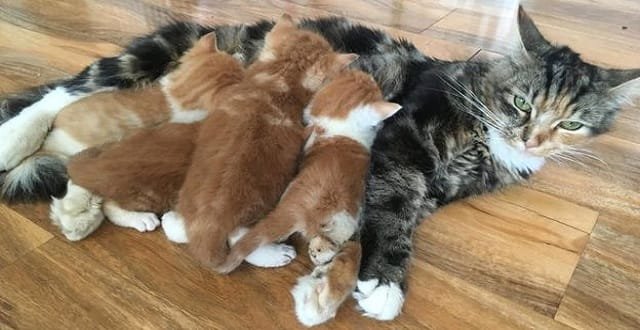Not very long ago, declawing was surely the go-to procedure for putting an end to destructive behavior. Now that everyone has a better understanding of what the procedure entails and the kinds of temporary and long-term effects it often has on our feline friends, many veterinarians and behaviorists strongly caution against it except in cases where it is medically necessary (to remove a tumor in the paw, for example). Here are 7 reasons to choose a humane option.
Information about clawing and alternatives to declawing can be found at the very end of this article.
#1 – It’s not simply the removal of claws.
Many simply people don’t understand what the declawing procedure actually entails. Despite what the name may suggest, declawing isn’t only the removal of a cat’s claws. Because of the way a cat’s claws naturally grow, the procedure also involves the amputation of bone. If the procedure were being done ton you, your fingers would be amputated right at the first knuckle.
#2 – Clawing is a completely natural and healthy behavior
When you declaw your cat, you’re denying her of a behavior that’s instinctual, natural, and healthy. Clawing isn’t merely for sharpening and removing dead layers from nails, it also helps your cat stretch and to relieve stress.
#3 – Declawing leaves your cat completely defenseless.
Even indoor cats can manage to escape to the outdoors sometimes. A door can easily be left open by well-meaning guests, faulty screens can pop out, and exceptionally stealthy cats can slip through your legs and out the door without you even noticing. Without any claws, your cat is left with only her teeth to defend herself from predators.
#4 – An increased in aggression
Claws are a cat’s primary defense against predators and danger. Without them, some cats default to a more aggressive personality to intimidate before danger has a chance to strike. Many declawed cats often begin to bite more.
#5 – Future litter box problems.
Cats instinctually avoid repeating actions which have caused them some pain in the past, but sometimes, they don’t associate the pain with the correct thing. Has your cat ever begun to avoid using the litter box because of a painful urinary tract infection? She associated the pain with the very act of being in the litter box, not with the infection. So even after an infection is completely gone it can be hard to convince her to use the litter box again. The same is quite true for declawed cats. Many cats who have been declawed experience extreme pain or discomfort while digging or standing in litter and it can be hard to get them back into the box, even after wounds have healed.
#6 – Very limited mobility
Cats walk on their toes and have to learn how to walk in a brand new way after being declawed (which removes the top of each toe). Re-learning to walk can actually be painful, not to mention depressing for an animal that relies on being well-coordinated and spry.
#7 – Longterm pain
When a cat is no longer able to walk on his or her own toes, the change in her posture and how her body holds her weight can result in pain and stiffness to her hips, legs, and spine. Many declawed kitties are also more prone to developing arthritis.
STOP DE-CLAWING!
H/T: iheartcats.com






